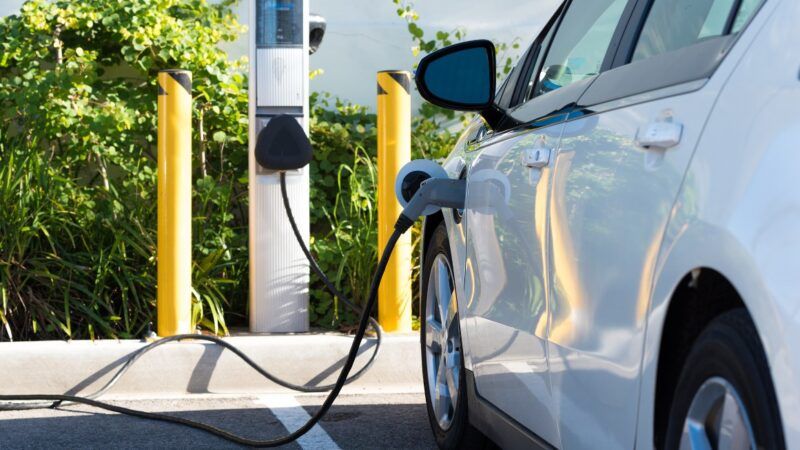California Advances Plan To Ban Gas Vehicle Sales by 2035
If the Golden State wants to convert to electrical vehicles, it better start embracing nuclear power.

Two years ago, California Gov. Gavin Newsom called on state regulators to develop a plan to ban the sale of gas-powered vehicles in the state by 2035. This week, those regulators are obliging him.
The New York Times reports that regulators with the California Air Resources Board today are expected to vote to implement a ban that will be phased in over the next decade:
The rule, issued by the California Air Resources Board, will require that all new cars sold in the state by 2035 be free of greenhouse gas emissions like carbon dioxide. The rule also sets interim targets, requiring that 35 percent of new passenger vehicles sold by 2026 produce zero emissions. That requirement climbs to 68 percent by 2030.
Supporters of the ban see California as leading the way to what will eventually become a new standard, the elimination of gas-powered vehicles as a mechanism of reducing polluting emissions across the country and replacing them with electric vehicles (E.V.).
The Times notes that it's not clear that this goal is even achievable within this time frame. John Bozzella, president of the Alliance for Automotive Innovation, warns that factors like inflation, availability of infrastructure, and pricing issues could affect any attempt to force this goal.
California currently has more than 560,000 registered electric vehicles as of December 2021, the most of any state. While that sounds like a lot, California has nearly 14 million registered vehicles operating in the state. So, even though Californians have been more agreeable to adopting electric cars (thanks in part to all the government-funded subsidies, of course), the percentage of those who drive them is still very low. Even the governor's office's own bragging notes that only 12 percent of light-duty vehicle sales in California in 2021 were electric vehicles.
Then there's the question of where all the energy needed to power these vehicles will come from. When Newsom first announced this plan two years ago, he was also essentially declaring war on fracking and fossil fuels in general. At the same time, the state's renewable energy systems weren't providing nearly enough electricity to power the state's grid, and they still aren't. While E.V.s may not emit carbon gases on their own, they are dependent on a power grid that is heavily dependent on fossil fuels.
Newsom also seemed to have no interest back then in nuclear power as an important tool in producing the energy needed to make his plan a reality. Replacing all gas-powered vehicles with E.V.s could increase energy consumption by around a third, according to the U.S. Department of Energy.
It appears that Newsom may finally be acknowledging that he's not going to be meeting these goals without nuclear power. California regularly struggles to produce enough electricity for residents in the summer as it is. Imagine millions of E.V.s plugging into the grid. Earlier this month, Newsom called for Diablo Canyon Nuclear Power Plant to remain open. It's the state's only remaining nuclear plant and had been scheduled to be closed in 2025. He wants to extend the power plant's life by another 10 years to make sure the state keeps the lights on.
The Associated Press notes that environmentalists see this as a betrayal, which should be treated as an example of how some (but not all) of these activists operate off vibes and feelings and don't really grasp what needs to be done to transition away from fossil fuels. If you don't want to pave over the entire Mojave Desert with solar panels, you need a plan to not just stabilize California's power grid but also expand it to account for all these E.V.s that are supposed to help the environment.
Of course, bans are just generally bad ideas, and most certainly Californians who want to buy gas-powered vehicles are going to purchase them in other states and bring them to California. Since Newsom isn't willing to wait for technological advancements and market forces to naturally expand E.V. sales, California will probably spend billions in subsidies and rebates to encourage adoption. This will likely result in a wealth transfer upward as poorer taxpayers who can't afford vehicles end up subsidizing E.V. purchases. And a massive state-funded plan tossing around the billions necessary to pull all this off will foster possible corruption and fraud along the way among people who are looking to cash in on whatever money the state is tossing out.


Show Comments (75)